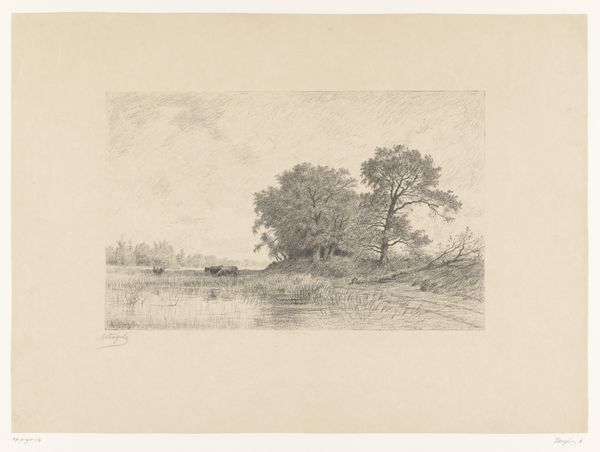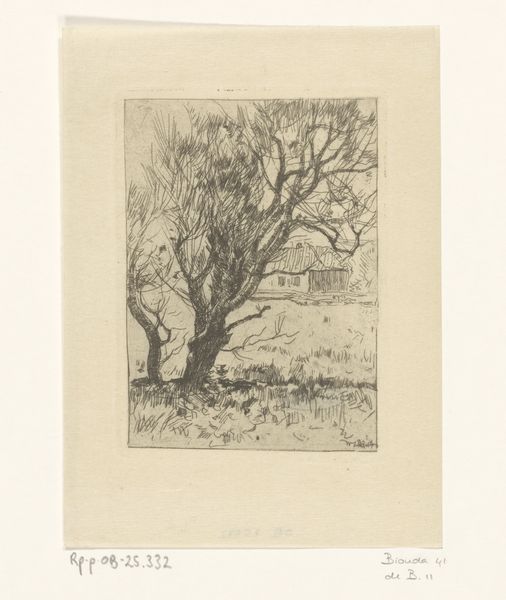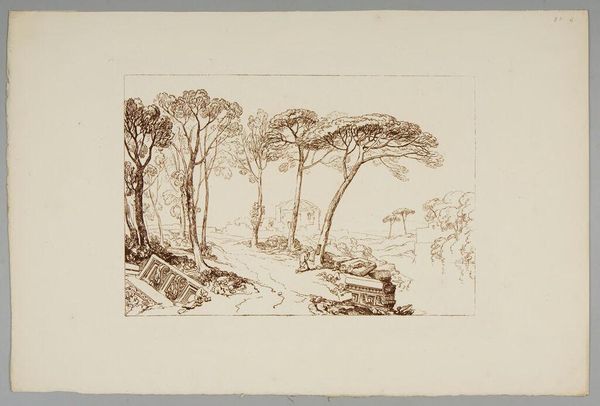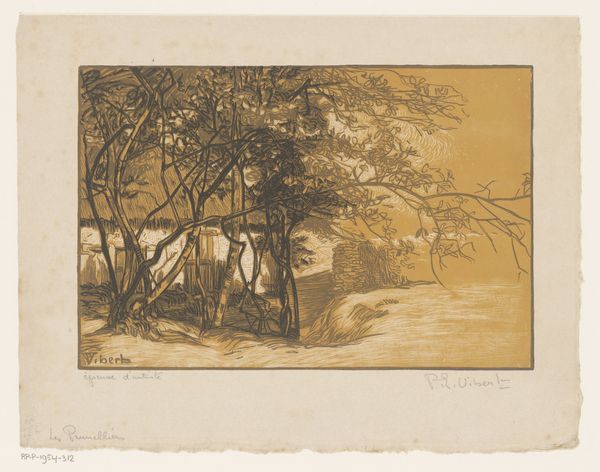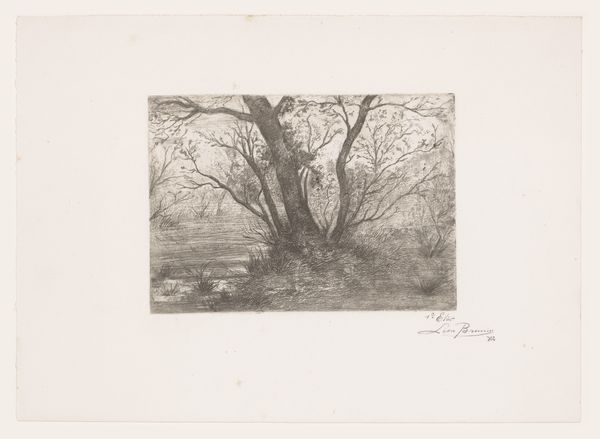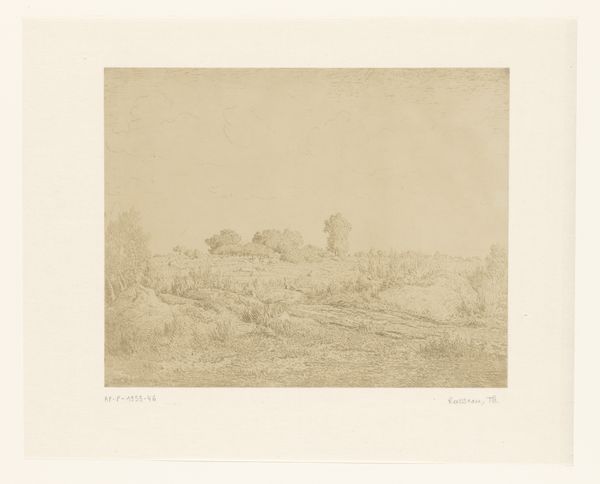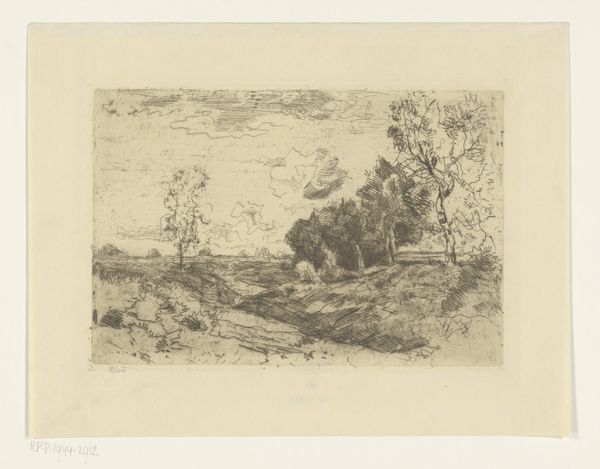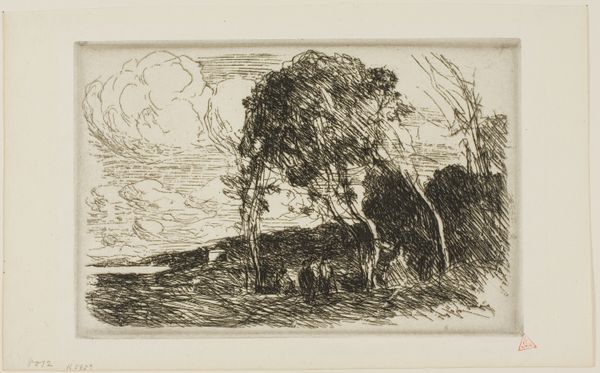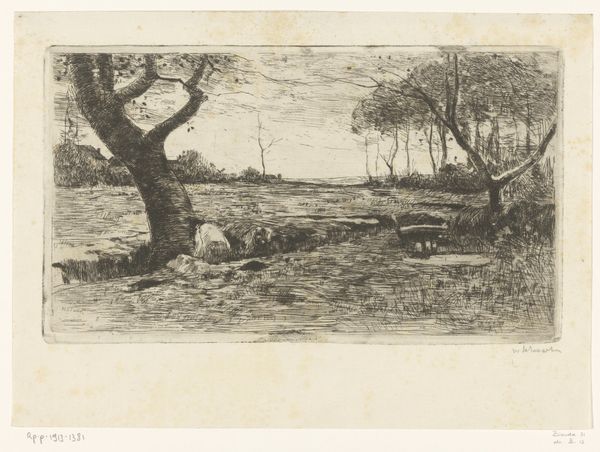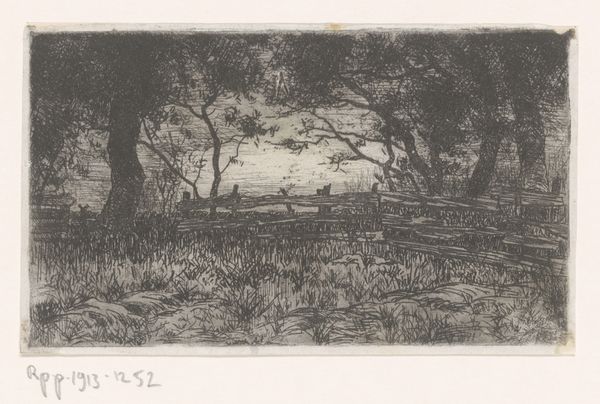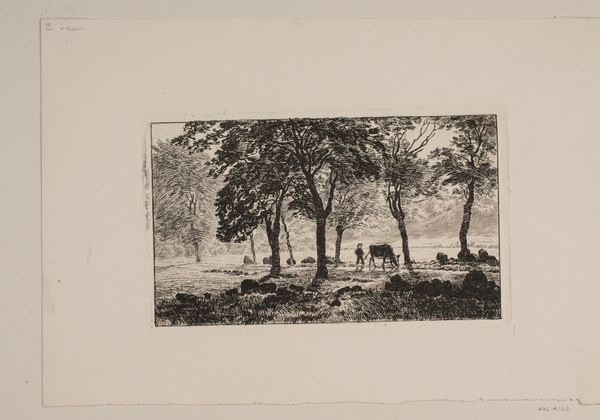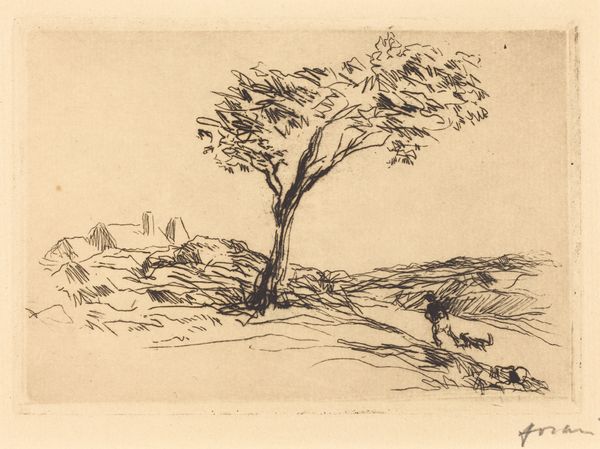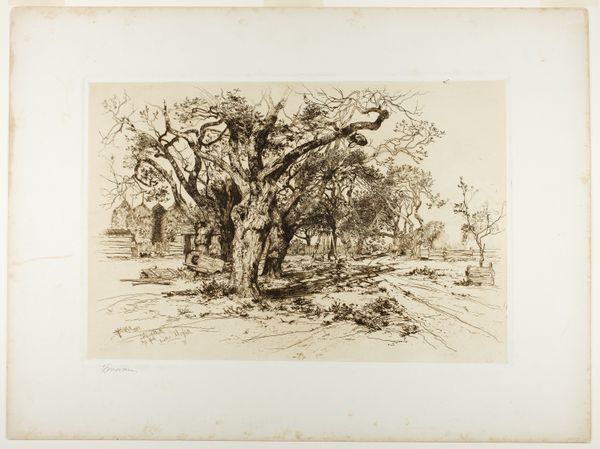
Dimensions: 142 × 188 mm (image/plate); 222 × 329 mm (sheet)
Copyright: Public Domain
Curator: Before us is Auguste-Louis Lepère’s “The Dead Apple Tree,” an etching on paper created in 1913, residing here at the Art Institute of Chicago. Editor: There's something hauntingly beautiful about this. The stark lines of the dead tree dominate the landscape, almost like a skeletal hand reaching out. Curator: Lepère was a master of etching, and it’s fascinating to consider how he used this medium to capture such a desolate yet pastoral scene. The process of etching itself, with its biting into the metal plate, seems apt for conveying the starkness of the subject. Think about the labor, the time etching all those tiny details required. Editor: Absolutely. The etching allows for incredible detail. Notice how the light catches the textures, the rough bark of the tree, and the grassy field. I'm also intrigued by how this image functions within a broader historical context. In 1913, just before the first World War, this image might have been read as a symbol of loss, of a dying way of life in rural France. Curator: That's a great point. Also consider that Lepère wasn’t just any artist, he also made propaganda posters during the war and that artistic background brings with it ideas of the politicization of the art world and the use of printmaking during conflict and tension. Editor: I see how that connection complicates our understanding of the artwork. Does it subtly critique industrialization and its impact on the environment, or is it merely a melancholy reflection on the changing rural landscape? I also think that we should think about the role museums play in bestowing value to works, and who makes these works ‘worth’ something, so to speak. Curator: Right. The social and political undercurrents can't be ignored. The selection of this subject is not a politically benign one in this timeframe. It all boils down to understanding that the image on view here isn't an objective slice of nature, but something mediated and manipulated. Editor: Well, reflecting on our discussion has shown that an image, simple or striking, speaks differently through changing times and varying conditions, especially considering where the artwork currently sits and is received. Curator: Precisely, reminding us that a material and historical approach can peel back layers and unearth deeper connections to reveal powerful works with a long reach, such as "The Dead Apple Tree."
Comments
No comments
Be the first to comment and join the conversation on the ultimate creative platform.
